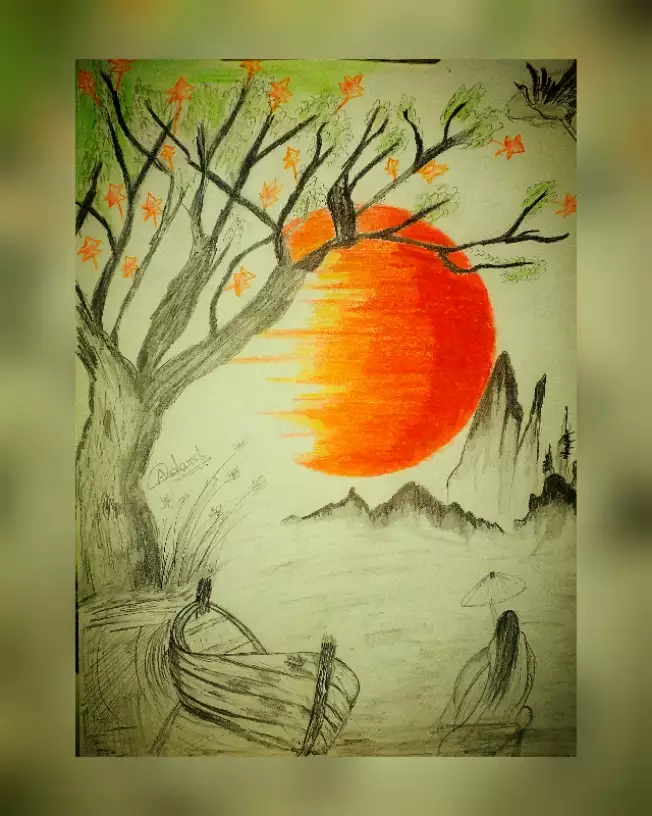A Deep Dive into one of the most Iconic Trump Artworks of Current Years
A Deep Dive into one of the most Iconic Trump Artworks of Current Years
Blog Article
Beginning on an Aesthetic Journey With the Lyrical Interpretations of Nature in Impressionist Landscapes
Each brushstroke, each play of light and darkness, and each color selection in their jobs speaks quantities regarding the artists' deep connection to nature and their capacity to equate its charm onto the canvas. As we explore the lyrical analyses of nature in Impressionist landscapes, we are welcomed to immerse ourselves in a globe where truth and feeling intertwine, offering a glance into the musicians' profound appreciation for the all-natural world.
The Exciting Brushstrokes of Claude Monet
Claude Monet's mastery of brushstrokes goes beyond plain method, imbuing his landscapes with an ethereal top quality that enthralls and astounds customers - trump art. His cutting-edge usage of color and light, combined with his distinct brushwork, creates a feeling of movement and life within his paintings. Monet's prominent series of jobs portraying water lilies and his legendary haystacks showcase his capacity to capture the short lived effects of light and ambience

Enjoying Light and Shadow With Camille Pissarro
Symbolizing a similar respect for the interaction of light and darkness, Camille Pissarro's imaginative vision unfolds as a harmonious exploration of the environment's luminous nuances. Pissarro, an essential number in the Impressionist motion, masterfully recorded the dynamic relationship in between light and shadow in his landscapes. His skilled usage of shade and brushwork allowed him to convey the subtle shifts in light that define various times of day and periods.
Pissarro's paintings frequently include dappled sunshine infiltrating leaves, casting complex patterns of light and shadow on the planet below. In works such as "Hoar Frost, the Effect of Snow, Pontoise," Pissarro skillfully depicts the crisp illumination of winter months sunlight compared with the great darkness that specify the snowy landscape. By welcoming both light and darkness in his compositions, Pissarro welcomes audiences to immerse themselves in the all-natural beauty and short-term impacts of light worldwide around them.

With Pissarro's works, we are advised of the transformative power of light and shadow, inviting us to stop and value the short lived moments of charm present in the day-to-day landscapes that surround us.
A Harmony of Color Styles by Edgar Degas
Edgar Degas coordinates a vibrant harmony of colors in his masterful artworks, infusing his structures with a dynamic interaction of colors that mesmerize the audience's look. Understood mainly for his ballet professional dancers and intimate scenes of Parisian life, Degas expertly controlled shades to convey mood and activity in his paintings. trump art. His use vibrant, contrasting shades and subtle tonal variants created a sense of deepness and vibrancy within his works
Degas' color palette typically was composed of rich blues, deep greens, and cozy oranges, which he used with certain brushstrokes to catch the essence of his subjects. Whether representing a ballerina mid-performance or a team of close friends chatting at a cafe, Degas' colors not only depicted the scene but likewise stimulated a feeling of emotion and power.
Additionally, Degas' experimentation with light and shadow included an extra layer of intricacy to his shade compositions, enhancing the overall environment of his paintings (trump art). Via his proficient adjustment of shade, Degas produced a visual harmony that remains to reverberate with customers today
Exploring Nature's Tranquility With Berthe Morisot
Berthe Morisot's imaginative vision offers a tranquil departure from the dynamic color symphonies of Edgar Degas, as she records the serenity of nature in her evocative landscapes. Understood for her delicate brushwork and intimate representations of everyday life, Morisot's landscapes exhibit a sense of tranquility and harmony.
Morisot's paintings usually include soft, soft tones that convey a feeling of peace and tranquility. Her works, such as "The Cradle" and "Summer season's Day," display her ability to catch the subtle appeal of nature in such a way that is both reflective and comforting to the viewer.
Unlike a few of her Impressionist counterparts who concentrated on strong colors and dynamic structures, Morisot favored to produce mild, introspective scenes that invite the customer to mirror and stop. With her masterful use light and darkness, Morisot creates a sense of serenity that reverberates with the customer on a deep psychological degree.
The Psychological Landscapes of Vincent Van Gogh
Vincent Van Gogh's landscapes strongly convey a depth of emotion through their vibrant brushwork and meaningful use of color. The Dutch post-impressionist musician is renowned for his ability to catch raw and intense feelings in his paintings, going beyond standard depictions of nature. Van Gogh's troubled individual life, noted by mental health battles, substantially pop over to these guys influenced his art, instilling his landscapes with a sense of anxiousness, melancholy, or liveliness.
In works such as "Starry Night" and "Wheatfield with Crows," Van Gogh's swirling brushstrokes and vivid shade selections stimulate an extensive emotional action from customers. The turbulent skies and perturbed landscapes in his paints reflect his inner chaos and emotional turbulence, inviting audiences to explore the intricacies of his psyche.
Van Gogh's unique visual language, characterized by overstated perspectives and bold use shade, produces landscapes that resonate with viewers on a deeply psychological degree. With his art, Van Gogh invites us to see nature not equally as an outside truth but as a mirror of our innermost sensations and feelings.
Final Thought
Finally, the impressionist landscapes published here of musicians such as Claude Monet, Camille Pissarro, Edgar Degas, Berthe Morisot, and Vincent Van Gogh offer a exciting and special visual analysis of nature. With their use of brushstrokes, feeling, light, and color, these musicians have created a harmony of images that stimulate a sense of peacefulness and charm in the environment. Their jobs remain to motivate and bewitch visitors with their lyrical interpretations of the landscapes around us.
Each brushstroke, each play of light and darkness, and each color option in their jobs speaks quantities concerning the musicians' deep link to nature and their capability to convert its beauty onto the canvas. His ingenious usage of shade and light, combined with his unique brushwork, develops a sense of movement and life within his paints. His adept use of shade and brushwork allowed him to convey the subtle shifts in light that define different times of day and seasons.

Report this page